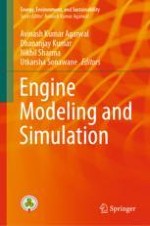2022 | OriginalPaper | Chapter
7. Soot and NOx Modelling for Diesel Engines
Authors : Rahul Kumar Singh, Avinash Kumar Agarwal
Published in: Engine Modeling and Simulation
Publisher: Springer Singapore
Activate our intelligent search to find suitable subject content or patents.
Select sections of text to find matching patents with Artificial Intelligence. powered by
Select sections of text to find additional relevant content using AI-assisted search. powered by
